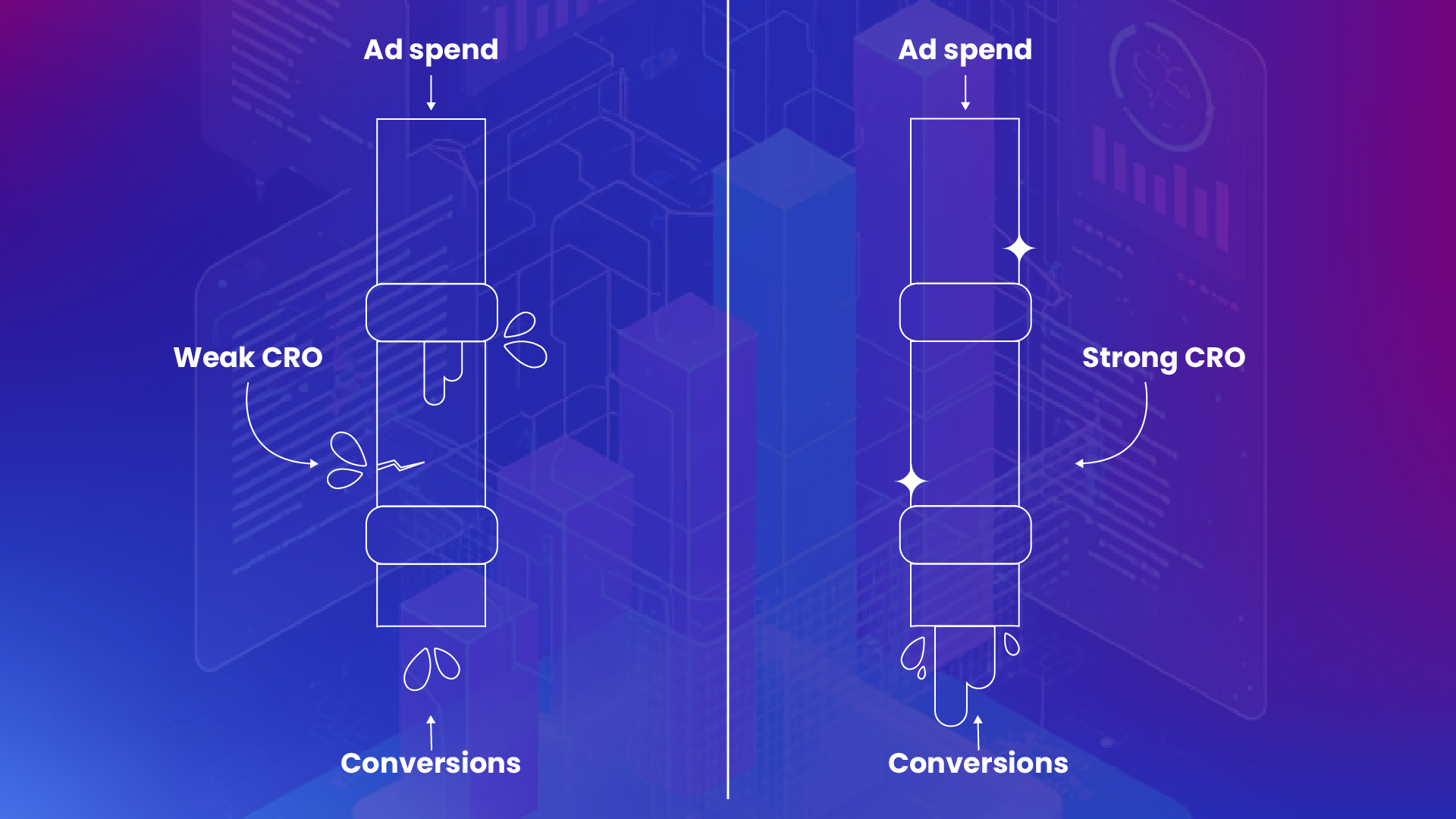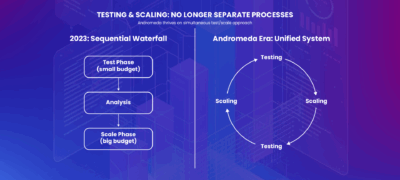
5 Reasons DTC Brands Plateau
They never run the numbers Every brand knows their ROAS, CPC, CTR, etc. How many brands can tell you their contribution…
They never run the numbers
Every brand knows their ROAS, CPC, CTR, etc. How many brands can tell you their contribution margin for their top 5 products? How many can tell you the delta between the retention of their BFCM 2023 cohort vs their Presidents Day sale 2024 cohort? How many can tell you their aMER by product category?
These business-level metrics are what should be calling the shots, not the at-the-best-of-times dubious numbers seen in ad platforms. These surface-level signals are useful but they should be looked at in the context of more meaningful KPIs which need to be steering business strategy.
Oftentimes, these metrics need to be calculated in spreadsheets to be uncovered and analyzed. Sometimes it can be painful and annoying to do so, but the brands that run these numbers and use them correctly are leagues ahead of the competition.
Sometimes it turns out that new customer acquisition is more expensive than previously realized and retention of those customers is lower than expected, which means targets need to be adjusted in order to preserve enough margin to be able to invest accordingly and grow the brand.
On the other hand, brands sometimes run with targets that are too conservative, which leads to their spend being severely limited by restrictive in-platform performance targets, which costs them serious scale, to the benefit of their competitors.
It never ceases to amaze me how so many multimillion-dollar companies are run on “gut” or “head math”. Equally amazing is that so many of them have no idea that if they had run their numbers and planned accordingly, they could have doubled or tripled their actual growth over the course of the last year.

They don’t invest in CRO
Every brand says that they take growth seriously. They invest massively in paid advertising. They work hard to achieve the smallest improvement in CVR via their ads. For some, improving the CVR from 3.4% to 3.8% would be a game-changer.
Meanwhile, they’ve been running traffic to the same LP for years. Some brands have never even tried making an LP and run everything to their PDPs or even homepage. While they’re frothing at the mouth to improve their ads’ CVR by that 0.4%, a new LP could easily push that 3.4% up to 5%+ instantly. Even a conservative improvement of conversion rate (say, 15-20%) often easily outperforms any “media optimization” you could do in-platform.
There is a law of diminishing returns at play so of course not every LP that is rolled out will improve CVR by 50% but it’s relatively common to see such huge jumps in conversion rate right out of the gate. High-performing brands treat CRO as a holistic part of their performance marketing. Most brands treat it as a complete afterthought.
The craziest example I’ve seen was a brand spending 7 figures a month on Meta, they had 10 different agencies making creative for them. This was back in 2021. The brand owner told me:
“We can’t figure out how to scale, nothing is working.”
All ~$8,000,000/mo of that traffic was going to a single LP that was a giant wall of text that would take 20 minutes to read through.
“Have you tried testing different landing pages?” I asked.
He got visibly upset and told me, “We need more creatives, not another landing page!”
Sometimes I wonder what ended up happening to them.
It also warrants mentioning here that there’s much more to CRO than spinning up a LP that’s an aesthetic improvement over your current one. If done right, CRO involves creating a hierarchy of information that seamlessly guides prospective customers through the entire buyer’s journey all at once. You need to have strategically chosen reviews in certain places that fully address their concerns. You need to be preemptively objection-handling with features, benefits, and FAQs that dissuade them from bouncing or otherwise not converting. The page should be engaging enough to dissuade them from bouncing and purchasing your product should feel like a no-brainer by the time they reach the end of the page.
With all that said, the crazy part is that a simple aesthetic upgrade to a LP and keeping all of the same information is almost guaranteed to result in a double-digit improvement in conversion rate against whatever stale LP or PDP most traffic is currently being run to.

They treat creative as a task, not a system
The vast majority of the time, a “creative problem” is really a “creative process problem”. Performance drops and the brand scrambles to get new ads out, doesn’t matter what they are, just need new ads in the account. When has throwing spaghetti at the wall ever solved anything?
Successful brands don’t produce creative in sudden massive batches in reaction to performance drops. Successful brands systematically analyze performance and make new creative based on their analyses.
Every creative should start with a clear hypothesis: What are we testing? Who are we speaking to? What variable are we isolating? Every creative should be a learning experience which leads to further hypotheses.
A good creative process never stops when performance is “good enough” and shouldn’t massively spike as the result of a few soft days.
The goal isn’t to just make ads for the hell of it and pray that the Meta algorithm gives you good performance. The goal is to build a creative engine that compounds learnings over time. You need to think about this as creating a feedback loop.
Once you’ve built that system, creative stops being reactive. You’re not panicking to replace what’s dying, you’re continuously feeding into what’s working. You start to identify patterns, isolate the real drivers of performance, and scale what matters.
That’s the difference between brands that guess their way to winners and brands that predictably engineer them.

They don’t trust (or invest in) the right partners
There are a few reasons why brands end up not trusting or investing in the right partners.
Most of the time the lack of trust is due to being burned by previous agencies on multiple occasions.
When that happens, brands often swing too far in the opposite direction. They overcorrect by keeping everything in-house or micromanaging external teams. The problem is that this usually leads to a cycle of underperformance: they hire agencies but don’t give them enough trust, budget, or time to run meaningful tests.
Good partners don’t just “run ads” or “redesign pages.” They’re thinking about how the brand’s overall business objectives translate into what numbers need to be achieved in the ad platforms. Good agencies identify blind spots and push back when needed. This is only possible when the relationship allows for collaboration instead of control.
Sometimes the issue is concern over the cost, rather than trust. This may lead to agencies going with the cheaper option.
The thing is that the ROI of hiring the right partner, even if they cost several times more than the cheap option, is almost always better. Skimping for a cheaper agency that provides little to no growth provides an ROI of 0 or sometimes a negative ROI. It doesn’t matter how much they cost at that point.
Typically when a good agency scales a brand, their fee is more than paid for in just the additional growth within the short to medium term after the engagement begins. If you factor in the future compounding value of achieving scale sooner than otherwise would have been possible, they typically pay for themselves, absolutely no questions asked, within the first few months.

They confuse activity with progress
Say you have a brand that brings in a new head of growth or a new agency partner. They get busy launching new ads, they’re making changes on the website, they want to try some new audiences, etc.
It all feels like progress, but it may not be if you don’t have a system for defining variables, tracking learnings, and applying those learnings.
Activity without reflection is just noise. Wheel spinning. There’s no point other than people wanting to look busy. I’ve seen this many times. New person comes in and they don’t know how to improve performance but they know how to look busy, so they start pulling as many levers with their eyes closed as possible to make it look like they’re doing something useful.
The best operators know when to stop doing more and start doing smarter. They can point to what’s been learned, not just what’s been launched.
When things are being tested well and progress is being made, updates sound more like a series of learnings and next steps based on those learnings. When there’s activity just for the sake of activity, updates sound like a laundry list of “I did this, I did that” without any learnings or even outcomes tied to those actions.
Another difference between a growth team that scales and one that spins its wheels is how they treat failure. One sees it as a reason to pivot fast and try yet another new thing that will surely work; the other documents it, extracts any learnings, and uses it to get closer to what actually works, based on data.

In conclusion, most brands don’t fail to scale due to a lack of effort, but because their efforts aren’t directed correctly. It’s important to have the right mindset about the business and growth and to build systems that can predictably and systematically achieve compounding improvements in results.
Related Articles

- PPC
What Great Paid Search Performance Hides, and Why D2C Marketing Leaders Need to Know
The “best-performing” paid search accounts don’t always fuel the most growth. As someone who’s audited and managed paid search accounts across…

- Paid Social
Meta Andromeda: The AI Revolution That is Redefining Digital Advertising
Meta Andromeda is trending everywhere this month, but the algorithm change has quietly reshaped ad performance since December 2024. The real…

- PPC
Your Google Ads Metrics Look Great, So Why Aren’t You Growing?
At a glance, everything looks great. Your Google Ads account is hitting ROAS targets. Spend is stable and efficient. Branded search…
How can we help you grow?



